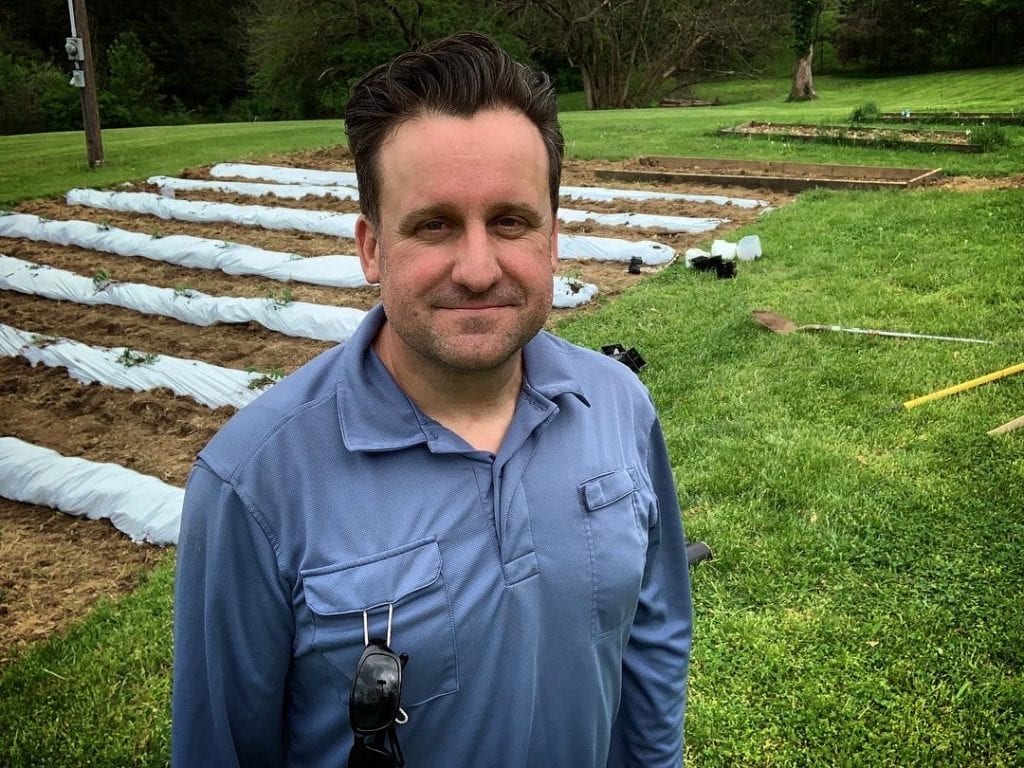How to grow a garden through plastic sheeting
Two things that can frustrate a hopeful gardener are weeds and slow growing plants. Planting your garden through agriculture plastic can be a cure for both of those worries. Here’s how to get growing.
A friend gave us a roll of plastic that they use on their farm. It’s black on one side and white on the other. The sheet is about 3 feet wide and they plant through the material to keep moisture and heat in the soil and cut down on weeds and use of herbicides. Here’s the problem though, on our friend’s farm they have a contraption they tow behind a tractor that wraps the plastic around the soil in rows and we don’t. To use this in our homestead garden we needed hard work and ingenuity. Here’s how we did this and what we hope to accomplish.
The hardest part is hoeing your rows.
The hardest work is in hoeing your rows. Our rows are 4 feet apart off center. This, we hoped, would allow us about 3 feet of area between rows to walk when our plants (in this case, tomatoes) matured. We hoed rows about 10-14 inches tall for our garden. Place sticks or tall stakes in the ground on either end and that will help you keep those rows straight.
The next part is VERY IMPORTANT!
Very important!!!! The most important thing you need to know when planting through agriculture plastic, like we did, is if one side is black and the other is white you need to keep the black side down. If you place the black side up you risk overheating your rows and seeds/plants and baking everything.
You have two options from here…
Once you have your row hoed, you have two options (unless you’re using a piece of machinery wrapping your rows for you… but if you were you wouldn’t be reading this great blog). Our video above lays out exactly what you need to do.
The first option is to stake down the plastic to one end of the row (in the video I showed how you can hold it down with a 4×4 post). In this method you’ll roll out the plastic to the end of the row, then return to the start and stake down the plastic. If you don’t have landscaping stakes, or don’t want to buy them, consider using old coat hangers that you cut to fit.

After your roll is laid out, the time consuming part of this option begins. Working your way a few feet down each side, begin to shovel about 2 inches of dirt on the outside few inches of your plastic roll. This will hold the plastic down and tight to your row. You want to keep wind from getting underneath that plastic or it will blow away and defeat the purpose. When you reach the end of the row that’s still attached to the roll of plastic sheeting make a nice straight cut, stake down that end, then cover the ends with about 2 inches of soil.
In the video you’ll see our preferred technique. It will get you more dirty but it seems to save some time and gives you a finished product that looks more like how the pros do it. When your row is hoed, and ready for the plastic sheeting, secure one end (with stakes or that 4×4 post). Roll the plastic down the row about 6 feet then go back to the beginning of the row and begin tucking the edges of the plastic sheeting under the soil of your row. Be careful not to poke holes in your plastic sheeting and get the ends folded deep underneath (similar to putting a sheet under a bed’s mattress). Continue to roll out about 6 feet of the plastic as you work to the end of your row.
Now it’s time to plant!
Once you’ve gotten your rows completely secured, it’s time to think about planting through them and it’s very easy. For these rows we chose to plant about 3 feet apart. Cutting a hole about the size of a baseball or smaller is ideal. You want to get that plant or seed into the ground without creating extra room for weeds to grow, critters to crawl or wind to get inside and wreak havoc.
Here’s something you may not have thought about also… bird droppings can spread weeds. Yes, if a bird were to feast on something weedy and then spring by your garden and do their business in that hole in the plastic, you could quickly find your plants competing with weeds to survive.

Think about placing a soaker hose, drip system or irrigating by hand if you need to. We planted on a day when rain was in the forecast and when it looked like we were going to get missed we sprinkled some water just to give our newly planted sprouts a drink.
Now, like anyone with a garden, we watch and wait. But waiting will include less weeding and that’s a big reward for the hard work.
